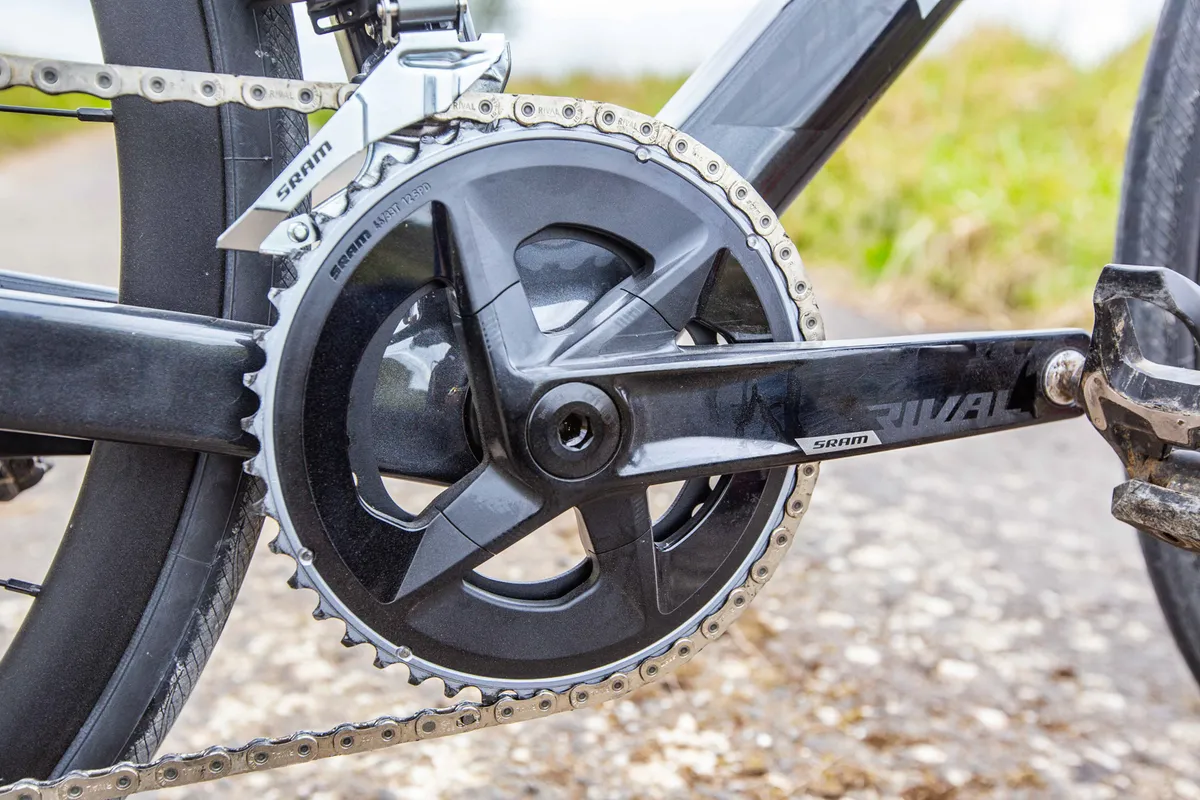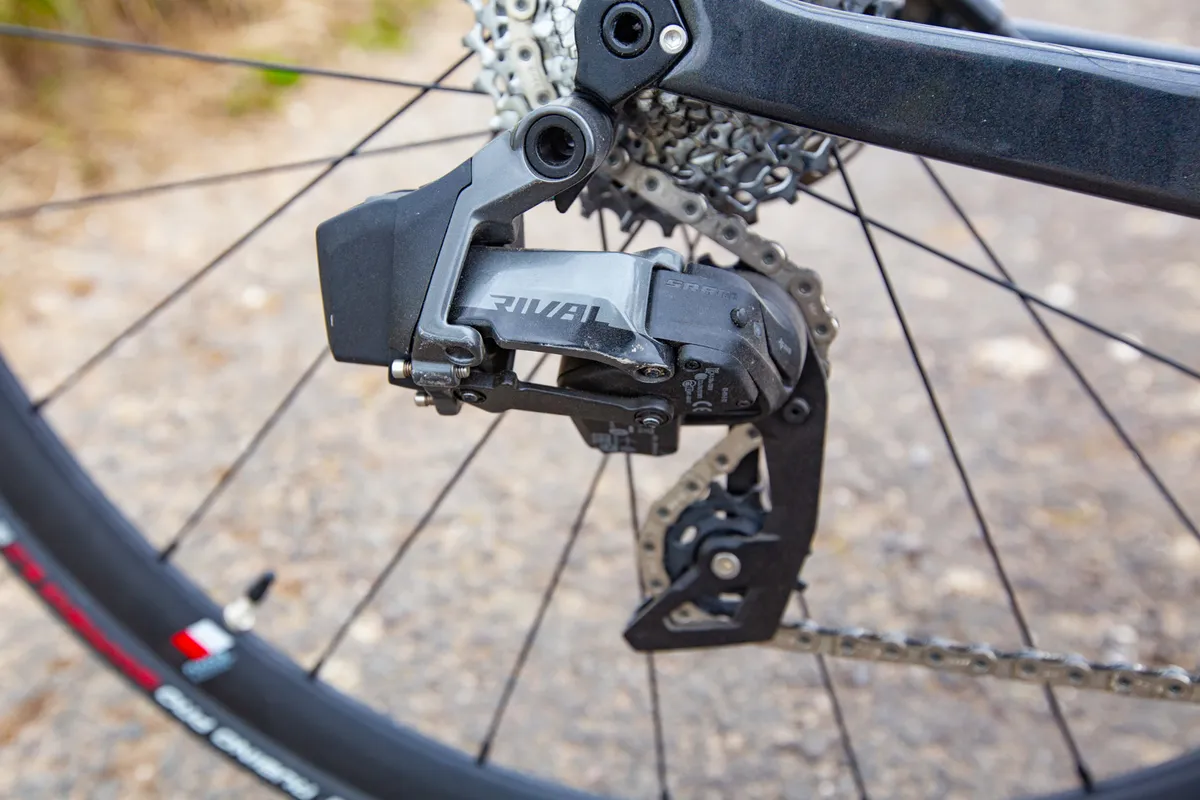When I got wind of SRAM Rival AXS, the latest and most affordable addition to the brand’s range of wireless electronic groupsets, I have to admit to being wary of what the brand would have to do to bring the AXS system down to the sort of money riders are willing to pay for a third-tier groupset.
Thankfully, SRAM has been pretty thoughtful about what to leave out, and what to produce more cost-effectively.
None of the underlying mechanics of the AXS system have been played with, so that means it has the same electronic brain, the same shift logic and, most importantly, the same motors moving gears and the same antennas transmitting information between the groupset and the AXS app.
The result is a groupset that feels extremely similar to the second-tier Force AXS and pro-level Red AXS groupsets.
I’ve covered the key details of SRAM Rival AXS in my launch story, but to recap: it’s 12-speed, comes in 1x and 2x versions (as well as Wide components for gravel riding), weighs around 300g more than Force AXS and, like all AXS components, can be mixed and matched with other parts across the range (including SRAM’s AXS mountain bike parts).
Oh, and there’s a power meter upgrade option, but I'm yet to try that.
New groupset, same eTap
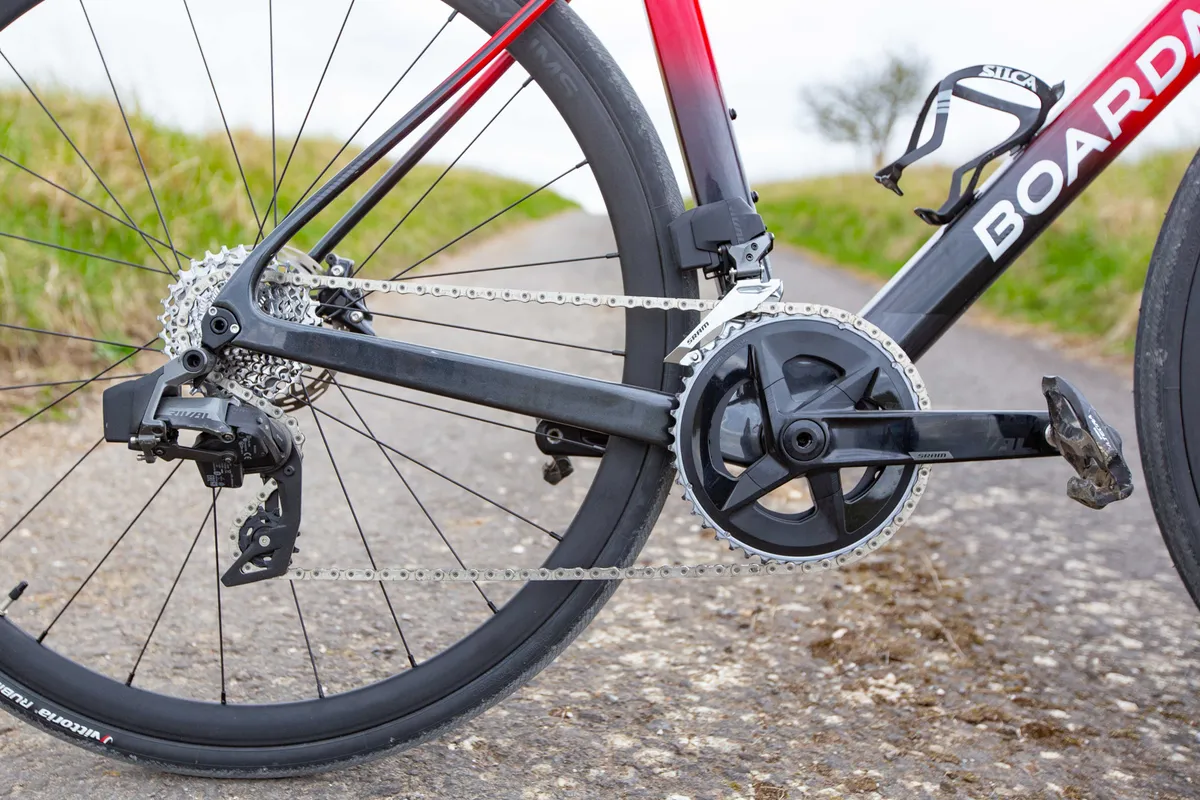
I’m a long-time user of SRAM’s wireless gearing, with two of my own personal bikes running the original 11-speed eTap (a Giant TCR and a Parlee Z-Zero with the little-seen rim brake version of eTap).
I’ve also been running a long-term test bike for the best part of two years with Force eTap AXS, SRAM’s rival to Shimano Ultegra Di2. (You can read our head-to-head review of Force eTap vs Ultegra Di2 here).
First and foremost, it’s worth saying upfront that Rival eTap’s greatest asset is just how similar it feels to Force (and, in turn, SRAM’s range-topping Red groupset) when it comes to the out-on-the-road experience.
So that means you get the same simple functionality: click the right-hand shift button for a harder gear on the cassette, click the left-hand button to make it easier, and click both together to shift the front chainring.
If you're coming to AXS fresh from a mechanical groupset or Shimano Di2, where the button configuration is set up to emulate mechanical shifting, then you’d expect some period of adjustment to get used to the SRAM layout – but the system is very intuitive.
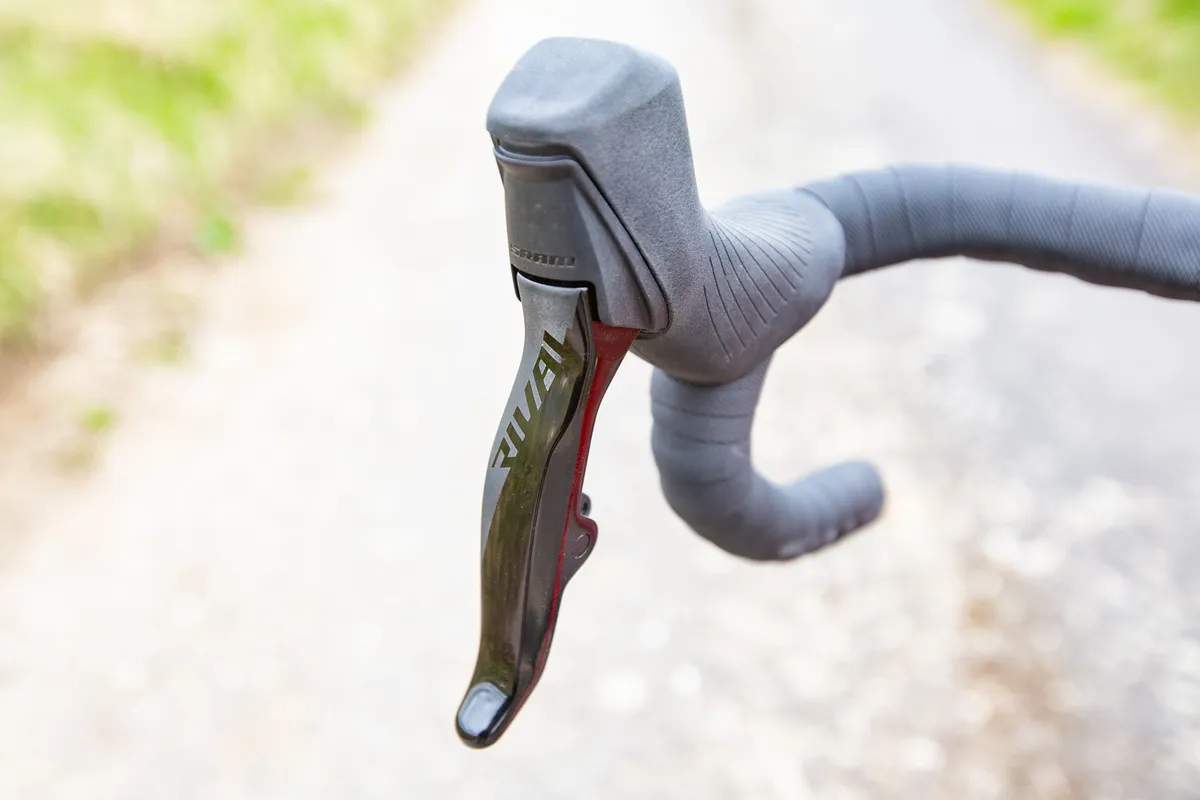
Superb shifting, once again
Rival’s shifting across the rear cassette is just as accurate and swift as Force AXS, on a par with Ultegra Di2, and significantly cheaper than both. Front shifts take a little more getting used to, having to push both triggers at the same time.
However, while some riders talk of a delay when shifting the front mech on AXS groupsets, I’m not sure that’s entirely true – it’s more about the difference in action.
With AXS, shifting the front mech requires simultaneous clicks of both the left and right shift buttons, which then prompts the front derailleur.
Comparing that to a mechanical groupset, where you get instant feedback from the cable and start to ‘feel’ the derailleur move, the actual shift ‘time’ from start to finish is pretty much the same.
As you'd expect, SRAM has used more affordable materials to construct Rival AXS, but the material differences in the build of the front and rear mechs have no effect on performance, in my experience to date. It just adds weight – and not a huge amount at that.
The rear mech uses a spring clutch to control chain movement and, in practical use, it copes just as well as the smart ‘Orbit’ fluid damper found on Force and Red eTap.
On rougher roads and trails, the clutch ensures the chain remains taut and reduces the chance of dropping the chain or damaging your bike’s chainstays.
The rear cassette uses a full pinned construction, which helps to keep the price of a replacement down, though a retail price of £112 / $125 / €125 still isn’t exactly cheap, even if it is a fair bit less than Force (£170) and Red (£325).
The shift quality of Rival is superb across the cassette. It’s also quiet – SRAM has used the same elastomer damping tech as Force and Red in between the cogs – and I for one like the new high-polish chrome finish over the rather dull, all-black of first-generation Force AXS (SRAM has switched Force cassettes to the same high-polish finish for 2021).
SRAM AXS app

The AXS app is a key part of SRAM’s electronic groupsets and that’s the case with Rival, too.
Pair the groupset to your phone via the free app and you can adjust a range of settings, such as the number of multi-shifts from a prolonged button press. Or you can choose ‘compensation mode’ – when you shift the front mech it automatically shifts the rear gears to compensate and put you in the next best available gear, to keep your pedalling smooth.
Finally, you can also go full-auto shift for the front mech. As you shift up or down the rear block, the bike will automatically change the front mech to the next best gear when you reach the extremes at either end of the cassette’s 12 gears.
The AXS app rarely gets a mention when talking groupsets but it deserves plenty of praise. First, the adjustability it offers comes as standard, whereas with Shimano's Di2 system you need to invest in the additional Bluetooth aerial (WU-111, £79.99 in the UK) and have it fitted.
The AXS app also offers plenty of analysis opportunities for your riding. The app records a ride with all the usual metrics – speed, distance, moving time, heart rate (if paired with an HRM), full GPS tracking (and it co-uploads to Strava automatically) – and also adds in component data.
If you’ve ever wondered how many times you shift gear on a ride, be it front or rear gears, the app will tell you the answer. Or you can look at other metrics: front shifts or rear shifts per kilometre, gear usage, time spent in each gear, distance spent in each gear, and so on. It can also link up with a power meter or Quarq’s Tyrewiz – a Bluetooth device that senses and transmits tyre pressure data.
All of that ride data will only appeal to certain riders, but if that’s you then you can really take a deep dive with the AXS app.
It’s impressive for a hardware manufacturer to have an app that’s this comprehensive and SRAM should be applauded for investing in what is an increasingly important part of bike tech.
SRAM Rival AXS bottom line
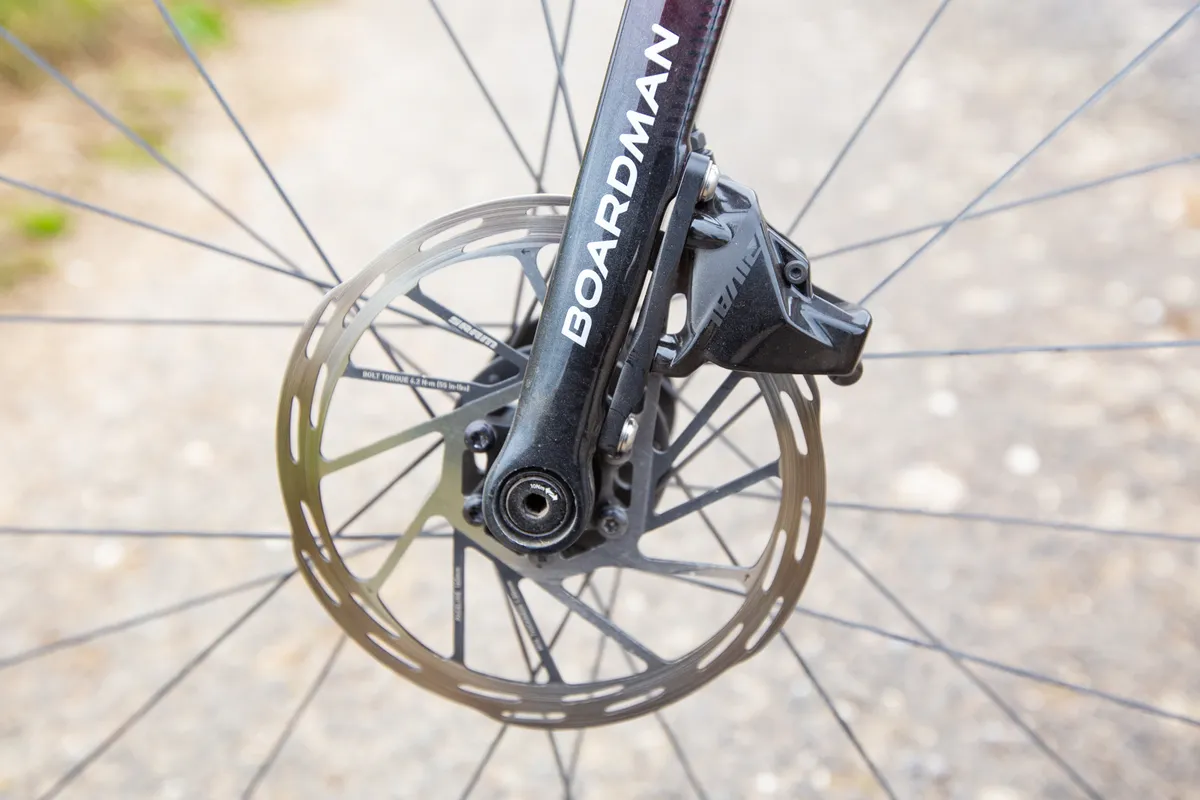
SRAM Rival AXS takes the best elements of Force and Red AXS and brings essentially the same user experience to a more affordable end of the market.
Living with AXS is easy and, while the batteries may not last as long on paper as Di2, they’re far more convenient – a quick click and the batteries (housed individually on the front and rear derailleurs) are released to plug into the charger. They can be charged from empty in 40 minutes and, in a world that’s used to charging devices daily, it’s really no hardship whatsoever.
The consistently accurate shifting outshines mechanical groupsets, where cables stretch, get gummy, age and corrode. If you’re a rider who is brought out in a cold sweat by the thought of making critical adjustments or servicing drivetrains, particularly given the prevalence of internal cable routing, then a wireless electronic groupset is a real boon, too.
Does Rival spell the end of the mechanical groupset? Not at all – well, not just yet. Just as Shimano’s Di2 and Campagnolo’s EPS haven’t signalled the end for the Japanese and Italian brands’ cable-operated ranges.

Where Rival makes a real impact is in bringing cutting-edge tech down to a lower level – and SRAM has done it in a way that makes little compromise or sacrifice in terms of real-world performance.
That’s something both Shimano and Campagnolo should take note of. If Rival has the success the widespread, initial take-up from bike brands suggests, how will the other two groupset players respond?
With a retail price north of £1,000, Rival AXS is still a significant investment, but it does mean we’ll see electronic groupsets on more affordable bikes. It’s also worth recalling that Force AXS retailed at £2,274 at launch, but a price revision at the end of last year dropped that to an RRP of £1,540.
Who knows what will happen with Rival's price, but if the same trend plays out over the next couple of years as the tech matures, maybe we really will see the end of the humble gear cable on mid-range bikes and groupsets, just as the hydraulic hose may spell the end of the brake cable.
Product
| Brand | Sram |
| Price | A$2054.00, €1411.00, £1268.00, $1370.00 |
| Weight | 3202g |
Features
| Speed | 12 |
| Brake type | hydraulic_disc |
| Cassette options | 10-30t, 10-36t |
| Chainring options | 48/35t, 46/33t, 43/30t, 40t, 46t |
